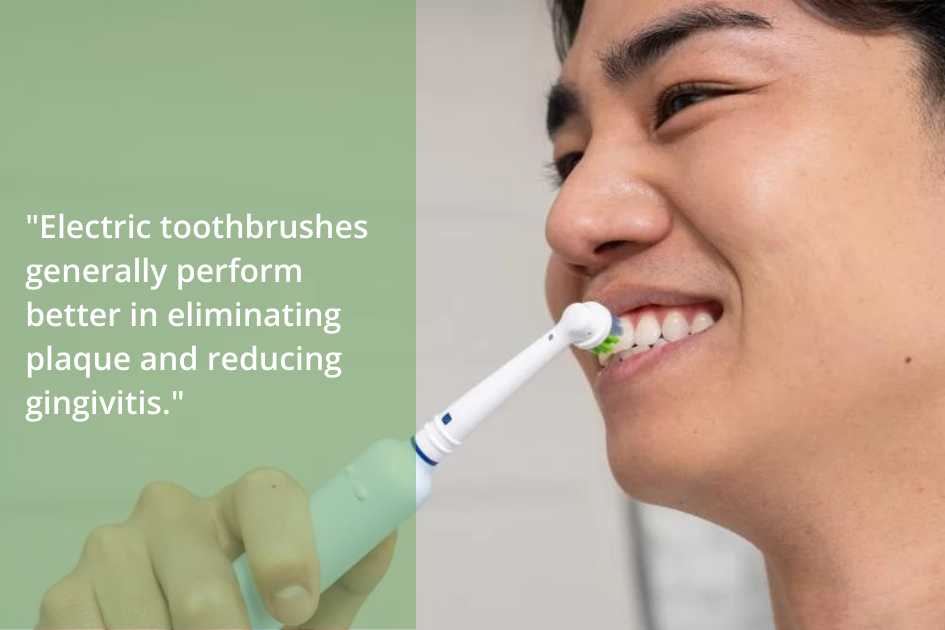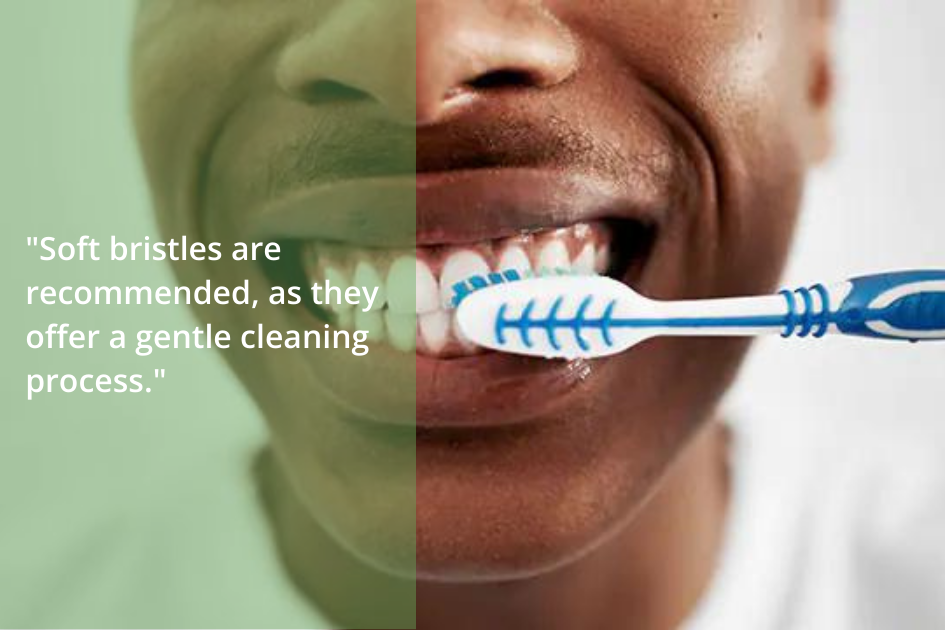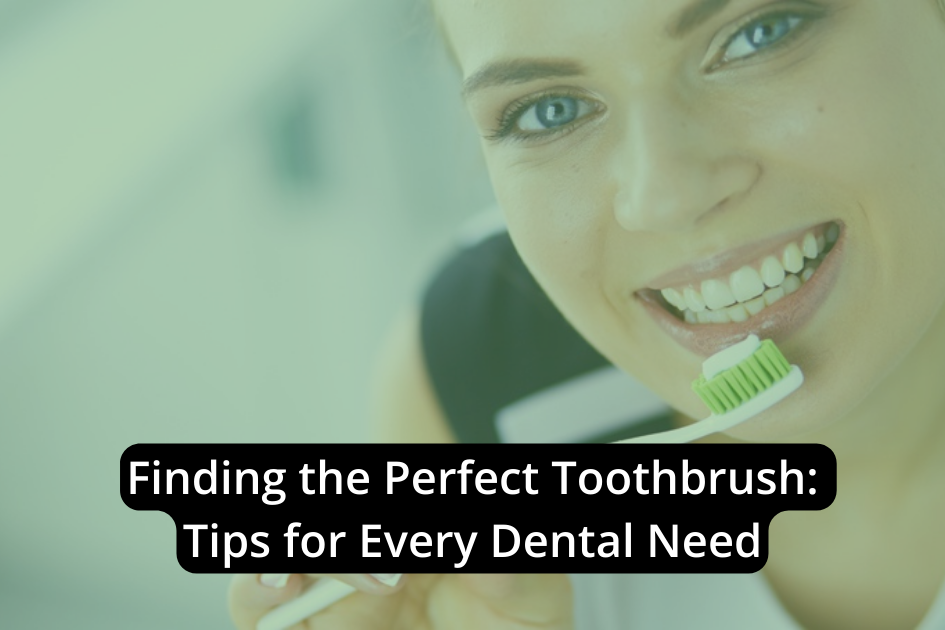Selecting the ideal toothbrush can be compared to identifying the correct key for a lock. The process is more complex than it appears, encompassing a range of factors: the choice between manual or electric, the preference for soft or hard bristles, the decision of a small or large head, and considering the toothbrush’s longevity.
We’re not merely discussing picking a toothbrush from a grocery store shelf. We’re poised to embark on a fascinating journey to comprehend the profound implications of this ostensibly simple choice on our overall dental health.
Understanding Your Dental Needs
Understanding your dental needs entails considering various factors such as gum sensitivity or the use of orthodontic appliances. These considerations will guide your selection of a toothbrush and determine whether a manual or electric one is the best fit.
If you have sensitive gums, a toothbrush with soft bristles may provide a more comfortable clean. Conversely, for those with orthodontic appliances, it might be necessary to choose a specialized design. However, it’s crucial to understand that everyone’s dental needs are different.
For this reason, we strongly suggest seeking advice from your dentist. They can offer personalized suggestions based on your specific dental conditions, helping to maintain optimal oral health.
Manual Vs. Electric Toothbrushes
The comparison between manual and electric toothbrushes reveals that each kind offers distinct advantages and disadvantages. Electric toothbrushes generally perform better in eliminating plaque and reducing gingivitis due to their steady and controlled motions. They usually come with options such as timers, pressure sensors, and various brushing modes, allowing for customization based on individual requirements and choices.
Nevertheless, the value of manual toothbrushes shouldn’t be overlooked. They offer a cost-effective solution and, when used correctly, can effectively clean teeth. But, they demand more effort and skill, posing a challenge for individuals with limited manual dexterity.
The choice between a manual or electric toothbrush will ultimately be determined by your personal needs, preferences, and financial capacity.
Importance of ADA Seal Approval
Recognizing the significance of the ADA Seal of Approval when choosing a toothbrush is vital for maintaining excellent oral hygiene. The seal from the American Dental Association ensures a toothbrush adheres to specific quality benchmarks, giving users confidence in their oral care items. While shopping for a toothbrush, it’s beneficial to look for this seal on the product packaging.
Here are some reasons why the ADA seal matters:
- The seal confirms that a toothbrush has undergone stringent testing, demonstrating its efficacy.
- The seal facilitates knowledgeable choices, guaranteeing the selection of superior oral care products.
- The symbol represents safety and quality, signifying that the toothbrush has satisfied the stringent standards set by the American Dental Association.
Selecting the Right Bristles

Choosing the ideal toothbrush necessitates a careful examination of bristle types. Bristle firmness can have a profound effect on your dental health, so knowledge about different bristle types is crucial.
Whether it’s maintaining gum health or avoiding enamel damage, the selection of bristles is a vital factor.
Understanding Bristle Varieties
Understanding the significance of choosing the right toothbrush bristles is crucial for maintaining excellent oral hygiene and avoiding enamel loss or gum problems. The type of bristles on your toothbrush isn’t merely a matter of appearance; it has a substantial impact on your dental health.
Recognizing the distinction between soft and hard bristles is a key factor. Soft bristles are typically recommended because they offer a gentle, efficient clean without the risk of enamel erosion or gum tissue damage. Conversely, hard bristles can be harmful, possibly leading to these issues.
When selecting a toothbrush, it’s important to consider the following aspects:
- Soft bristles are generally more suitable for the dental needs of most individuals.
- Hard bristles can potentially cause unneeded damage.
- The Canadian Dental Association discourages the use of medium or hard bristles.
Importance of Bristle Firmness
Understanding the role of bristle firmness in maintaining dental health is crucial. Soft bristles are recommended, as they offer a gentle cleaning process that lowers the chances of enamel erosion and gum damage. On the other hand, hard bristles can prove to be harmful, resulting in these same problems.
Bristle tips ought to be rounded to ensure a tender touch that protects your oral tissues. The incorrect bristle selection can result in enamel loss, a severe dental issue. Hence, the importance of selecting the right bristles for your toothbrush can’t be overstated. It’s a straightforward choice that can profoundly affect your oral health.
Bristles and Gum Health
Maintaining gum health and safeguarding our enamel requires us to choose toothbrushes with soft, rounded bristles. These bristles enable gentle cleaning, vital for preserving the health of our teeth and gums.
The gentleness of soft bristles is ideal for enamel protection. They can accomplish thorough cleaning of our teeth without causing excessive wear or damage.
Soft bristles are also superb for sustaining healthy gums. Using toothbrushes with hard bristles could potentially harm the gums, leading to various oral health complications.
Importantly, soft bristles are efficient at removing plaque. They can access and clean hard-to-reach areas, guaranteeing complete oral hygiene.
Choosing the Proper Brush Size
Discussing the ideal toothbrush necessitates addressing the significance of picking the appropriate brush size.
The brush head’s size influences our ability to effectively cleanse every part of our mouth, including those spots that are challenging to reach.
We aim to comprehend brush head sizes, the crucial role of choosing the right size, and the impact of professional guidance in this procedure.
Understanding Brush Head Sizes
Choosing the correct brush head size is a crucial aspect of ensuring effective and comfortable dental hygiene. The size of the brush head greatly influences the toothbrush’s maneuverability and the ability to access difficult areas of your mouth. A smaller brush head provides more flexibility, allowing easy navigation around every corner of your mouth. On the other hand, while potentially less maneuverable, bigger brush heads may cover a larger surface area, enabling more efficient cleaning with fewer strokes.
When selecting a brush head, consider the following:
- The brush head size should suit the size of your mouth for comfort while brushing.
- The brush head needs to fit comfortably between your cheeks and teeth.
- The size of your brush head should allow you to access all areas of your mouth, including back molars and gumline.
Importance of Correct Size
Recognizing the significance of appropriate brush size selection isn’t just about comfort during brushing. It’s a crucial factor in ensuring comprehensive cleaning of all oral areas, particularly those challenging to reach. This is particularly relevant for residents of Cedar Park TX, where dental hygiene is considered paramount.
If the brush head of a toothbrush is excessively large, it may not effectively clean some areas, resulting in uncleaned spots during brushing. On the other hand, an extremely small brush head could trigger overbrushing, potentially causing harm to our gums. Hence, it’s critical to choose a toothbrush size that fits our mouth comfortably, leading to improved overall oral hygiene.
The design of the handle, another important feature, should offer a secure grip for superior control. Customizing these choices to our dental needs can help avoid oral health complications.
Consultation With Dental Professional
Selecting the correct toothbrush size might appear simple, but it can be quite challenging. That’s why we suggest booking a consultation with a dental expert, such as Dr. Dale Williams from Cedar Park Premier Dentistry. He can offer a detailed explanation about various toothbrush bristle types and assist you in choosing a toothbrush that aligns perfectly with your needs.
Dr. Williams can support you in:
- Grasping the importance of toothbrush size and its impact on your dental health
- Identifying the most suitable toothbrush bristle type for your teeth and gums
- Making a well-informed choice when selecting a toothbrush for ideal dental care.
Consider Comfortable Handle Designs
Ensuring a thorough and comfortable brushing experience requires careful consideration of the toothbrush handle’s design. Handles designed with ergonomics in mind provide a comfortable grip, transforming brushing from a chore into a pleasant routine.
Handles with textured or rubberized surfaces can help prevent the toothbrush from slipping, hence giving you better control over your brushing technique. It’s recommended to opt for a handle design that feels comfortable to hold, thus improving usability.
A flexible handle can adjust to diverse brushing angles, enabling more efficient cleaning. Assessing the handle’s size and shape is also crucial to confirm it matches your hand size and brushing method. Essentially, a comfortable handle can substantially upgrade your oral hygiene ritual.
Optimal Toothbrush Replacement Period

To ensure superb oral health, it’s essential to swap our toothbrushes every three months, a suggestion backed by dental professionals. This time frame is excellent because it guarantees that the bristles continue to effectively remove plaque and uphold our oral hygiene habits.
Dental professionals have pointed out certain signs to watch for, signaling the need for a toothbrush replacement:
- Bristles seem worn or misshapen
- The toothbrush has exceeded a three-month lifespan
- You’ve recently fought off an illness
Frequently changing your toothbrush is a straightforward but important measure in protecting oral health. It’s a habit we should stick to for the benefit of our overall health.
Toothbrush Selection After Illness
Maintaining the habit of regularly changing your toothbrush is vital, especially after recovering from an illness. The bristles might still harbor harmful pathogens from your sickness, which could result in a potential reinfection. Hence, it’s essential to replace your toothbrush after an illness to uphold good oral hygiene.
This action initiates a clean slate, eliminating any bacteria that might’ve accumulated during your sick days. A dental professional can provide suitable advice on the best toothbrush to choose after an illness.
Regular toothbrush replacement not only promotes good oral health but also contributes to your overall health, particularly during the recovery stage after an illness.
Conclusion
Optimal oral hygiene is crucial and selecting the right toothbrush can significantly contribute to it. The type of toothbrush, whether manual or electric, the American Dental Association (ADA) seal, the bristle quality, and handle comfort, all have a role to play in ensuring good dental health.
Another crucial aspect is the regular replacement of your toothbrush, particularly after falling sick. So, let’s continuously seek advice from our dentists and make informed decisions for our healthy smiles.
Don’t forget, your smile is your responsibility, so make the right choice today!


